Blog » Travel Guides » Comprehensive 2-Wee...
Comprehensive 2-Week Vietnam Travel Itinerary for 2025: North to South Highlights and Planning Tips
Explore Vietnam from north to south with this detailed 2-week itinerary for 2025, featuring top destinations, travel logistics, cultural insights, and practical tips. Designed for both first-time and repeat travelers, this guide balances iconic sites with emerging highlights for an authentic, manageable adventure.
Key Takeaways
- This 2-week Vietnam itinerary covers the country’s north, central, and south regions, balancing cultural landmarks, natural wonders, and exciting adventures for a well-rounded experience.
- Combining flights, trains, and buses optimizes travel time and comfort, with early booking recommended to secure the best prices and avoid travel fatigue.
- Budget travelers can expect to spend around $400 to $700 for two weeks, with cost-saving strategies including staying in hostels, eating street food, and using public transport.
- Authentic local experiences such as cooking classes, craft workshops, and visiting night markets enrich cultural immersion throughout the trip.
- Customizing the itinerary based on travel style—whether focusing on history, adventure, relaxation, or family needs—ensures a personalized and enjoyable Vietnam journey.
- Preparing essential travel documents and packing season-appropriate clothing are necessary for a smooth and safe Vietnam trip in 2025.
Thinking about a trip to Vietnam and want to squeeze the most out of your two weeks there?
This Vietnam travel itinerary 2 weeks guide has got you covered for exploring the country from top to bottom in 2025.
Whether you’re into bustling city vibes, jaw-dropping natural spots, or soaking up rich culture, this plan hits all the big attractions and sneaks in some lesser-known gems you’ll be glad you didn’t miss.
You’ll kick things off amid the lively hustle of Hanoi and the stunning limestone cliffs of Ha Long Bay, wander through the ancient charm of Hue and Hoi An, and wrap up in the energetic streets of Ho Chi Minh City and the laid-back Mekong Delta.
It’s a solid mix of culture, adventure, and chill time. Plus, you’ll get handy advice on how to handle travel logistics, budget smartly, dive into authentic local experiences, and tweak the trip to fit your vibe and pace.
Get ready for a smooth, well-planned, and seriously exciting journey across Vietnam, with clear daily routes, real practical tips, and insider know-how—all so you can have an unforgettable two-week adventure in this amazing country.
Overview of Your 2-Week Vietnam Journey
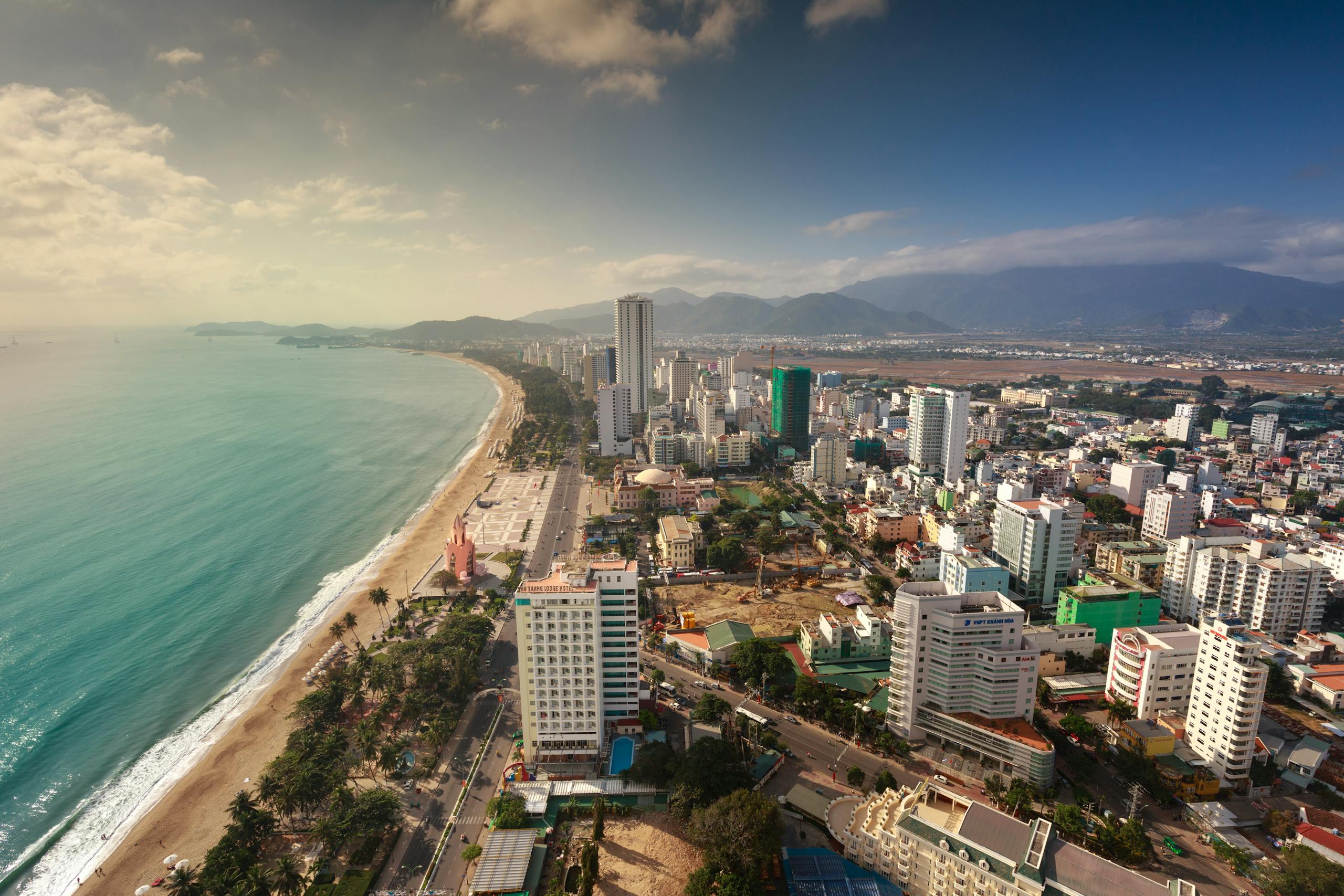
Key Highlights Across North, Central, and South Vietnam
This Vietnam travel itinerary 2 weeks is designed to showcase the incredible diversity from north to south.
Up north, dive into Hanoi’s lively Old Quarter and soak in the breathtaking limestone karsts at Ha Long Bay.
Central Vietnam brings the historic imperial atmosphere of Hue and the enchanting ancient streets of Hoi An, plus beautiful countryside and beaches.
Down south, experience the buzz of Ho Chi Minh City paired with the peaceful, river-laced life of the Mekong Delta, floating markets and all.
Every stop offers its own unique cocktail of culture, nature, and adventure, making up a well-rounded 14-day Vietnamese adventure.
How This Itinerary Balances Culture, Nature, and Adventure
This plan strikes a smart balance between soaking in cultural landmarks, exploring stunning natural spots, and getting a good dose of adventure.
You’ll dive into Vietnam’s culture through iconic sites like Hue’s Imperial City, street food hunts in Hanoi, and magical lantern-lit evenings in Hoi An.
On the nature front, expect to cruise the scenic seascapes of Ha Long Bay, trek among scenic rice paddies and caves in Ninh Binh, and cruise the lush waterways of the Mekong Delta.
If you’re after some adrenaline, you’ll have plenty to choose from: kayaking in Ha Long Bay, biking through rural landscapes, and touring the infamous Cu Chi tunnels.
The itinerary wisely mixes in short internal flights and transfers so you’re spending more time exploring, and less time stuck on the road or in airports. That way, you avoid travel burnout and get the best experience wherever you go.
Who This Itinerary Is Best For
This 2-week plan is great for travelers who want a mix of active exploring and cultural immersion—without feeling like they’re rushing through everything. It works perfectly for first-timers wanting a comprehensive intro to Vietnam, but also gives repeat visitors fresh angles on top spots.
Solo adventurers, couples, and small groups will appreciate the rhythm of activity and downtime. Families can easily tweak the pace and focus on kid-friendly highlights.
Whether you’re chasing history, nature, or city thrills, this itinerary’s got a flexible approach that can fit your style.
Day-by-Day Detailed Vietnam Itinerary
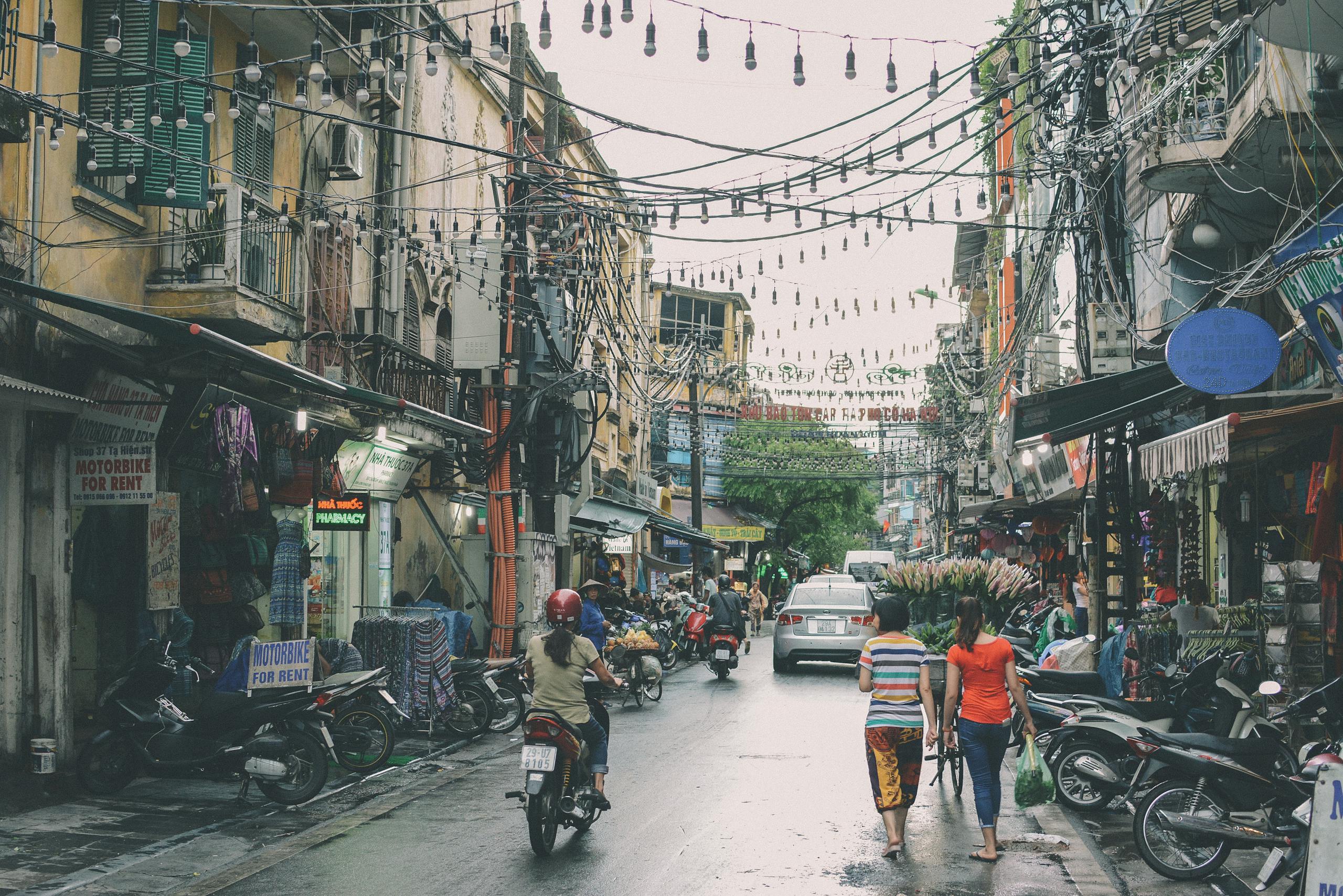
Days 1-3: Discover Hanoi and the Northern Surroundings
Start your trip in Hanoi—the energetic capital with a rich past. Spend day one wandering the vibrant Old Quarter, devouring street food classics like pho and egg coffee, and catching a traditional water puppet show after sunset. Don’t skip a relaxing walk around Hoan Kiem Lake with the charming Ngoc Son Temple nearby, plus a visit to the Temple of Literature, Vietnam’s first university—pretty neat history right there.
Day 2, head north to Sapa via bus or overnight train. The mountain scenery offers a refreshing change from city life, and you can explore ethnic minority villages like Cat Cat before gearing up for some trekking through those famous rice terraces.
On day 3, get out there for immersive treks in villages like Lao Chai and Ta Van. Staying overnight in a homestay here is a fantastic way to really get a feel for local life before heading back to Hanoi.
Days 4-5: Embrace Sapa’s Majestic Mountains and Rich Culture
Take a couple more days to soak in Sapa’s trails or just chill in town. Check out vibrant markets selling colorful textiles, meet locals from the Hmong and Dao communities, and maybe hit up nearby waterfalls or climb to Ham Rong Park’s hilltop shrine for killer views. Fresh mountain herbs and local dishes here are quite the treat.
On day five, return to Hanoi to freshen up, gearing you up for the next big adventure: Ha Long Bay.
Day 6: Experience Halong Bay – Cruising and Outdoor Activities
Time to cruise through the UNESCO-listed limestone karsts of Ha Long Bay, undoubtedly one of Vietnam’s top highlights. Paddle your way through hidden caves, swim in those clear turquoise waters, and visit traditional floating fishing villages. Many cruises throw in cooking classes or even squid fishing at night. Spending the night onboard? Adds a magical vibe to the whole experience.
Days 7-8: Central Vietnam – Imperial Hue and Charming Hoi An
Fly from Hanoi to Hue, Vietnam’s old imperial capital full of history. Explore the impressive Imperial City (Citadel), visit the peaceful Thien Mu Pagoda, and check out royal tombs along the scenic Perfume River.
On day eight, drive along the spectacular Hai Van Pass heading to Hoi An. Get lost wandering ancient streets decked out with colorful lanterns and check out the iconic Japanese Covered Bridge. Tailor shops and lively markets are perfect for picking up unique souvenirs.
Days 9-10: Beach Time and Optional Adventures Near Hoi An
Use these days to catch some R&R on An Bang Beach or dive into extra activities. Take a cooking class, bike through tranquil rice paddies and the fragrant Tra Que herb village, or visit the My Son ruins, a cool cluster of ancient Cham temples. This part is flexible so you can balance cultural fun with some chill time.
Days 11-12: Southern Vietnam – Explore Dynamic Ho Chi Minh City
Fly down to Ho Chi Minh City (Saigon) and dive into its electric energy and history. Visit the moving War Remnants Museum, the iconic Independence Palace, and the bustling Ben Thanh Market. French colonial architecture, like the Notre-Dame Cathedral, adds charm, and the city’s rooftop bars and nightlife scenes keep things lively after dark.
Days 13-14: Mekong Delta Exploration and Departure
Wrap up by exploring the tranquil Mekong Delta. Cruise peaceful canals, visit lively floating markets like Cai Be or Ben Tre, and experience village life through local workshops. Enjoy fresh Mekong cuisine before heading back to Ho Chi Minh City for your last day.
If you’re up for a half-day excursion, check out the Cu Chi Tunnels with their fascinating history, or just relax and get some last-minute shopping done before your flight home.
- Tip: Book your internal flights early to score the best deals, especially on routes like Hanoi to Hue and Da Nang to Ho Chi Minh City.
- Travel advice: Overnight buses or trains to Sapa are super popular, so booking ahead is a must, especially in busy seasons.
| Day | Location | Main Activities |
|---|---|---|
| 1-3 | Hanoi & Surrounding North | Explore Old Quarter, Water Puppet show, Sapa trekking |
| 4-5 | Sapa | Trekking mountains, ethnic markets, homestays |
| 6 | Halong Bay | Cruise, kayak, explore caves |
| 7-8 | Hue & Hoi An | Imperial City tour, Hai Van Pass, Ancient Town stroll |
| 9-10 | Hoi An area | Beach, cooking class, My Son ruins visit |
| 11-12 | Ho Chi Minh City | History tours, markets, nightlife |
| 13-14 | Mekong Delta & Departure | Boat tours, floating markets, Cu Chi Tunnels |
Top Destinations and Emerging Highlights to Include
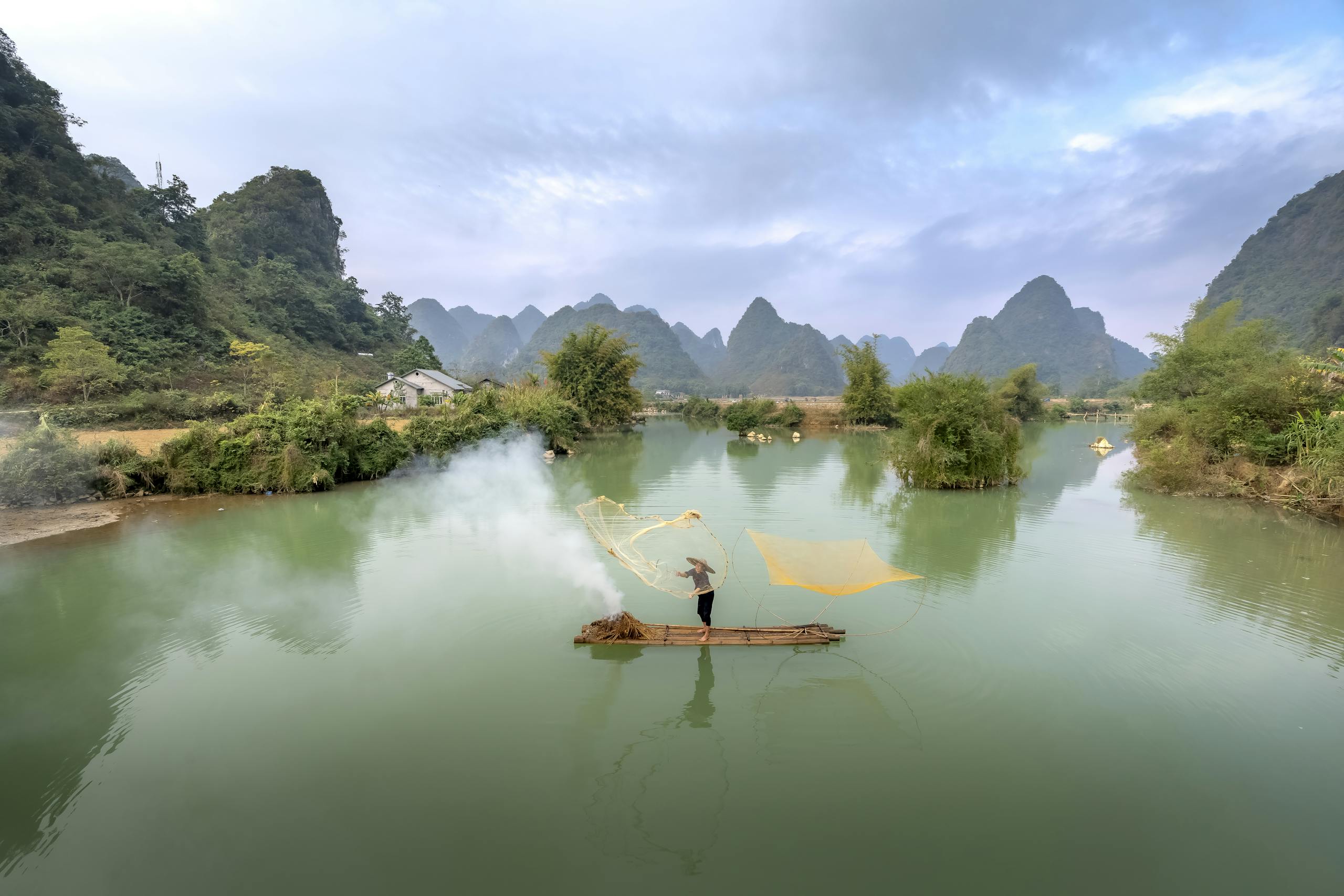
Cultural and Historical Sites in Hanoi and Hue
Hanoi is packed with history and culture. Don’t miss the energetic Old Quarter with its blend of bustling streets and French colonial vibes. Stop by Hoan Kiem Lake and Ngoc Son Temple to see local life in action. The Ho Chi Minh Mausoleum offers a deep dive into recent history, and the Temple of Literature is a beautiful peek into Vietnam’s ancient Confucian roots. The Hoa Lo Prison, AKA the “Hanoi Hilton,” shares more somber stories from colonial and wartime days.
Hue dazzles with imperial grandeur. The Imperial City (Citadel), a UNESCO World Heritage Site, features must-sees like the Noon Gate and Palace of Supreme Harmony. Visit the tranquil Thien Mu Pagoda and royal tombs of Minh Mang, Khai Dinh, and Tu Duc—each blending stunning architecture and lush surroundings. A boat ride down the Perfume River wraps this cultural journey in tranquility.
Nature and Adventure Spots in Sapa and Halong Bay
Sapa is a must for trekkers. Wander through terraced rice fields, visit ethnic minority villages like Lao Chai and Ta Van, or climb Fansipan Mountain, known as the “Roof of Indochina.” Nearby, the Silver Waterfall and Love Waterfall offer peaceful hikes. Staying overnight in homestays here lets you really soak in local culture and hospitality.
Halong Bay is legendary for its stunning scenery—kayak between limestone towers, explore the gigantic Sung Sot (Surprise) Cave, or swim by Titop Island. Rock climbing on Cat Ba Island rounds out the adventure for the daring. An overnight junk boat cruise is the classic way to take it all in, and don’t miss the aerial views from the Queen Cable Car on Cat Ba Island—it’s a whole new perspective.
Hidden Gems Around Hoi An and the Mekong Delta
Near Hoi An, the peaceful An Bang Beach is a great spot to relax away from the crowds. Visit Tra Que Vegetable Village to try your hand at farming, or glide silently through Cam Thanh Coconut Village on a traditional basket boat. The My Son Sanctuary, tucked in the jungle, reveals ancient Cham temples best seen at sunrise or late afternoon to dodge crowds. Nearby, the Cham Islands offer pristine beaches and snorkeling heaven.
In the Mekong Delta, explore authentic rural life in Tra Vinh and Ben Tre. Islands like An Binh offer cozy homestays, and early mornings bring lively floating markets like Cai Rang. Bird lovers will appreciate the Gao Giong Bird Sanctuary near Dong Thap, a peaceful spot to catch sight of local wildlife.
Emerging Destinations Worth Considering
| Destination | Location | Highlights |
|---|---|---|
| Ha Giang Loop | Northern Vietnam | Epic mountain passes, colorful ethnic villages, scenic motorbike rides |
| Phong Nha-Ke Bang National Park | Central Vietnam | Massive caves including Son Doong, adventure caving, stunning karst views |
| Quy Nhon & Phu Yen | Central Coast | Untouched beaches, quiet coves, fresh seafood |
| Con Dao Islands | Southern Vietnam | Pristine beaches, turtle nesting, historic prison tours |
| Ninh Binh (Tam Coc/Trang An) | North of Hanoi | Quiet limestone cliffs, peaceful boat rides, less crowded than Ha Long Bay |
Planning tip: If you’ve got the time, spend 2-3 days exploring any of these hidden gems—they add off-the-beaten-path spice to your Vietnam 2-week itinerary.
Transport and Travel Logistics Throughout Vietnam

Best Ways to Travel Between Cities (Flights, Trains, Buses)
Covering Vietnam in two weeks? You’ll want to mix flights, trains, and buses to balance speed and comfort. Flights are the quickest way to jump between big hubs like Hanoi, Da Nang, and Ho Chi Minh City—just 1 or 2 hours of flying and you’re there, more time for sightseeing.
Trains offer a scenic, relaxing slower option, especially overnight trips between cities like Hanoi to Da Nang or Ho Chi Minh to Nha Trang. They might take 8 to 18 hours, but with comfy sleeper cabins and gorgeous countryside views, your travel time becomes part of the adventure.
Buses, including sleeper buses, are the cheapest and connect even the smaller towns. Modern buses often have AC and WiFi, but comfort can vary, so stick to reputable companies to avoid headaches.
Tips for Booking and Using Local Transport
Book early during busy seasons. For domestic flights, snagging tickets early scores better prices and flight times. Main airlines are Vietnam Airlines, VietJet Air, and Bamboo Airways. Keep in mind many airports sit outside city centers—factor in extra travel time.
Train travelers should reserve sleeper cabins well ahead, especially around holidays. Trains usually pull into central stations, saving taxi hassles.
Buses are best booked through trusted operators like FUTA or The Sinh Tourist instead of random street sellers to dodge scams. In cities, ride-hailing apps like Grab make hopping around easy and cheap, whether it’s by car or motorbike.
Want freedom to explore? Renting a motorbike lets you hit your own pace—but only if you’re comfy with Vietnam’s lively traffic, which can be wild.
Balancing Travel Time with Relaxation to Avoid Fatigue
Long travel days can wipe you out, so pacing is key. Mix speedy flights for long hauls with scenic train or bus rides for shorter stretches. Avoid stacking multiple overnight trips in a row—it can seriously tire you out.
Build in chill time in relaxing spots like Hoi An or beach towns to recharge. Try to keep travel legs under 6 hours whenever possible so you stay energetic.
Travel light to make hopping between transport easier, and prepare for Vietnam’s heat and humidity—especially in the south, it can add to the exhaustion.
| Transport Mode | Speed | Comfort | Best For |
|---|---|---|---|
| Flights | Fastest (1–2 hours) | Good | Long distances, time-saving |
| Trains | Scenic, slower (8–18 hours) | Very comfortable with sleepers | Overnight journeys, countryside views |
| Buses | Slow, flexible | Varies (better with reputable operators) | Budget travel, small towns |
By mixing these options and planning wisely, you’ll travel efficiently but still have plenty of downtime, making your 2-week trip both fun and manageable.
Recommended Activities and Authentic Local Experiences

Culinary Experiences and Street Food Tours
If you’re a foodie, Vietnam is a dreamy place. Cities like Hanoi, Ho Chi Minh City, Hoi An, and Hue offer killer street food tours that dive way deeper than just pho and banh mi. The XO Foodie Tour in Ho Chi Minh City is a standout for uncovering hidden local flavors you won’t find on your own.1
Cooking classes are a must-try, usually starting with a market stop to pick fresh ingredients. In Hoi An, you can even mix a basket boat ride and fishing with cooking local specialties like Cao Lau noodles. In Hanoi, sharing your homemade meal with locals (and some rice wine) creates a genuine cultural connection.3
Down south, farm-to-table tours let you pick produce yourself and whip up traditional dishes under expert guidance—super fun and tasty.4
Cultural Workshops and Local Craft Participation
Get hands-on with craftsmanship by joining workshops in lantern making in Hoi An, crafting conical hats in Hue, or pottery classes. These workshops let you learn time-honored artisan skills and understand Vietnamese culture on a deeper level.2 Visiting local markets and family rituals also boosts authenticity and connection.
Some tours combine cooking lessons with market visits, which is a neat way to tie together food and culture. Planning your visit to coincide with local festivals or rituals really brings Vietnam’s lively cultural calendar to life.2
Outdoor Adventures and Nature Excursions
Nature lovers will go nuts for trekking in Sapa’s northern hills or exploring Da Lat’s lush landscapes. Trails wind through tea plantations, ethnic villages, and thick forests.4 Cycling around rural spots like Hue, Ninh Binh, or the Mekong lets you see peaceful scenery mixed with lively community vibes.
If water’s more your thing, the Mekong Delta and Phu Quoc offer kayaking through mangroves, snorkeling over reefs, and scenic floating market cruises—perfect for travelers craving adventure mixed with cultural sights.4
Evening Markets and Nightlife Highlights
Night markets in Vietnam are buzzing hubs full of food, crafts, and social scenes. Hanoi’s Old Quarter Night Market, Ho Chi Minh’s Ben Thanh Market, and Hoi An’s lantern-lit evenings are especially charming.2 Beyond markets, cities like Saigon have lively nightlife featuring rooftop bars, live music, and cozy pubs. Don’t miss traditional performances like Hanoi’s water puppet shows or Hoi An’s folk music for a cultural evening out.12
Practical Tips for a Smooth Vietnam Trip in 2025
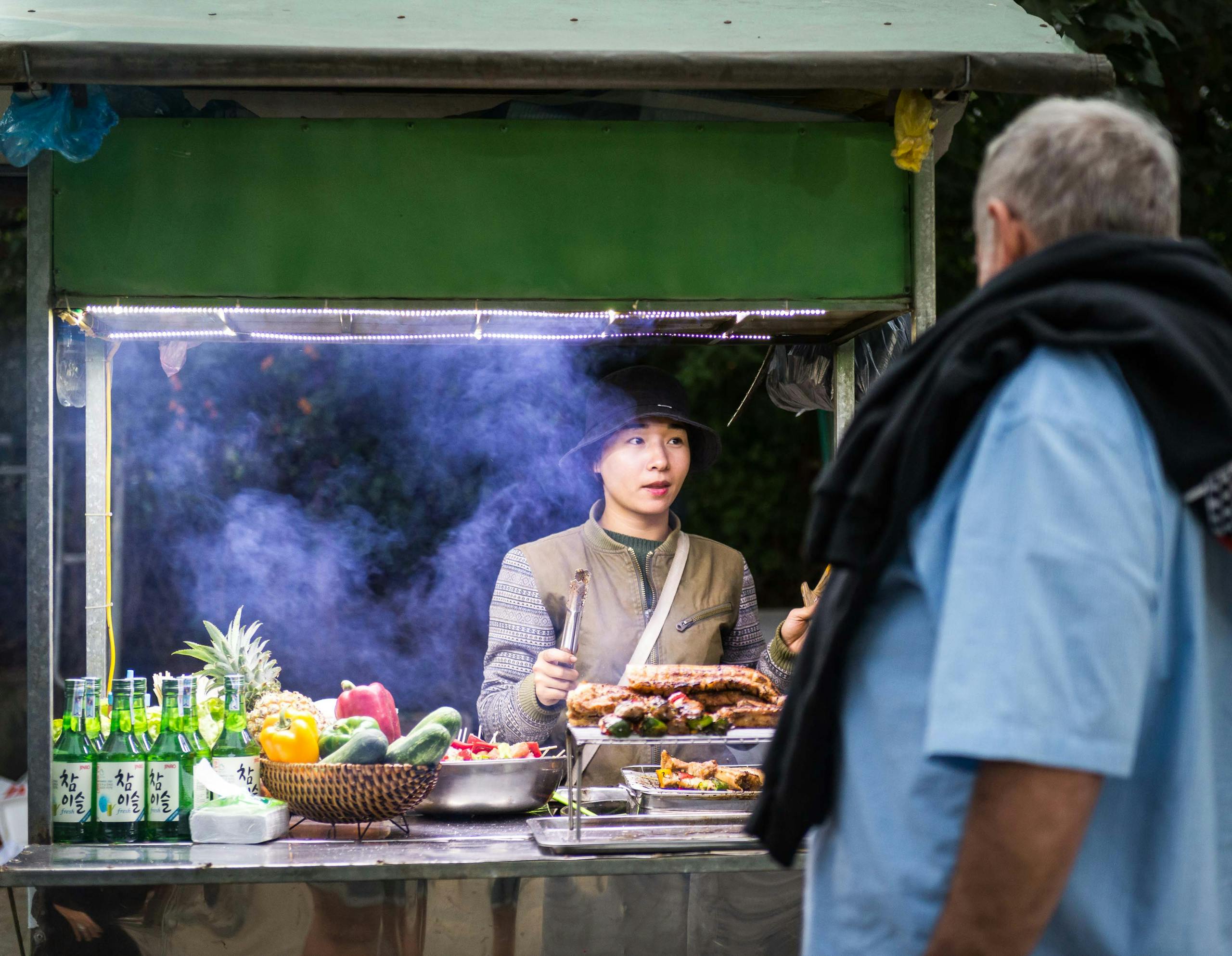
Essential Travel Documents and Visa Information
Heading to Vietnam in 2025? Make sure your passport is valid for at least six months after your return date. Most folks need a visa, unless you come from a visa-exempt country. Check whether you can get a visa-free entry or e-visa and sort it out well ahead. It’s smart to carry proof of onward or return travel, since airlines and immigration will want to see it. Also, be ready to show you’ve got enough cash, roughly $30–40 USD per day, just in case.
Health and Safety Advice Including Travel Insurance
Vietnam doesn’t require you to have travel insurance, but having solid travel insurance that covers medical emergencies, evacuation, lost stuff, and trip cancellations is a smart move. Make sure your routine vaccines are up to date, and think about shots like Hepatitis A and Typhoid. Stick to bottled water, avoid ice cubes, and be picky about street food hygiene. Use mosquito repellent, especially if you’re in areas prone to dengue or malaria. Keep emergency numbers handy—113 for police and 115 for ambulance.
Local Etiquette and Language Basics for Travelers
Respect goes a long way in Vietnam. Dress modestly when visiting temples and rural spots, and take your shoes off before entering homes or shrines. When handing things over or receiving them, use both hands—that’s polite. Avoid public displays of anger or affection, since locals can find these a bit uncomfortable. Learning basic Vietnamese words like “Xin chào” (Hello), “Cảm ơn” (Thanks), and “Tạm biệt” (Goodbye) will get you far. English is pretty common in cities but less so in the countryside.
Packing Tips for Seasonal Weather and Activities
Vietnam’s weather changes a lot depending on where and when you go, so pack smart. The North (like Hanoi and Sapa) can get chilly from December to February, so bring warm layers. Summers are hot and rainy—light, breathable clothes and a waterproof jacket are your friends. Central Vietnam (Hue and Da Nang) is hot and humid, with rainy spells from September to December. The South (Ho Chi Minh City and Mekong Delta) stays warm all year—think lightweight clothes, sunblock, and hats.
Don’t forget sturdy shoes and insect repellent for trekking. Swimwear and sandals for beach days, and modest outfits for temple visits. Also pack photocopies of important papers, a universal adapter, and any meds you need. Quick Checklist for Packing:
- Warm layers for Northern winters
- Rain jacket for Central Vietnam’s wet season
- Light, breathable clothes for the South
- Sturdy shoes and insect repellent for trekking
- Modest clothing for religious sites
- Travel documents and medication copies
With a bit of prep, your 2-week Vietnam trip in 2025 will be comfy, safe, and respectful of local culture.
Budget Planning and Cost-Saving Strategies

Estimated Costs for Accommodation, Food, and Transport
A typical budget for 2 weeks in Vietnam sits around $400 to $700 for budget-conscious travelers, covering where you stay, what you eat, and how you get around. Hostels, guesthouses, and homestays usually run between $5 and $15 per night—easy on the wallet and cozy.
Food is a steal, especially with Vietnamese street eats—expect to pay roughly $10 to $15 a day. Transport costs vary, but buses, trains, and shared vans generally cost between $1 and $5 daily, making travel super affordable.
| Category | Daily Range | 2-Week Estimate | Typical Details |
|---|---|---|---|
| Accommodation | $5–$15 | $70–$210 | Hostels, guesthouses, homestays |
| Food | $10–$15 | $140–$210 | Street food, local eateries |
| Transport | $1–$5 | $20–$70 | Local buses, trains, sleeper buses |
| Activities | Varies | $50–$120 | Free sites; paid tours $20–$40 each |
| Total | $20–$35/day | $400–$700 | Typical budget traveler |
Money-Saving Tips Without Sacrificing Experiences
- Stay in hostels or homestays. Dorm beds or guesthouse rooms cost way less than hotels and usually include breakfast.
- Eat street food. Delicious, authentic meals can be as cheap as 50 cents to $2.
- Use public transport. Buses, trains, and shared vans save you a bundle compared to taxis or private rides.
- Book flights and tours early. It saves money and locks in your spot.
- Opt for free or cheap attractions. Lots of temples, markets, parks, and walking tours cost little or nothing. Keep some budget for splurges like Ha Long Bay cruises or Cu Chi tunnels.
- Travel light. Avoid extra baggage fees and rely on inexpensive local laundry services.
Planning for Unexpected Expenses
Life happens. It’s smart to set aside about 10–15% extra of your budget for emergencies—think medical stuff, lost things, or travel hiccups.
Travel insurance is a must-have to cover medical emergencies or cancellations. Carry a mix of cash and cards since ATMs might be scarce outside cities. Knowing local prices helps you avoid getting fleeced. Using a simple app to track spending can keep your budget on track too.
Customizing Your Vietnam Itinerary Based on Travel Style
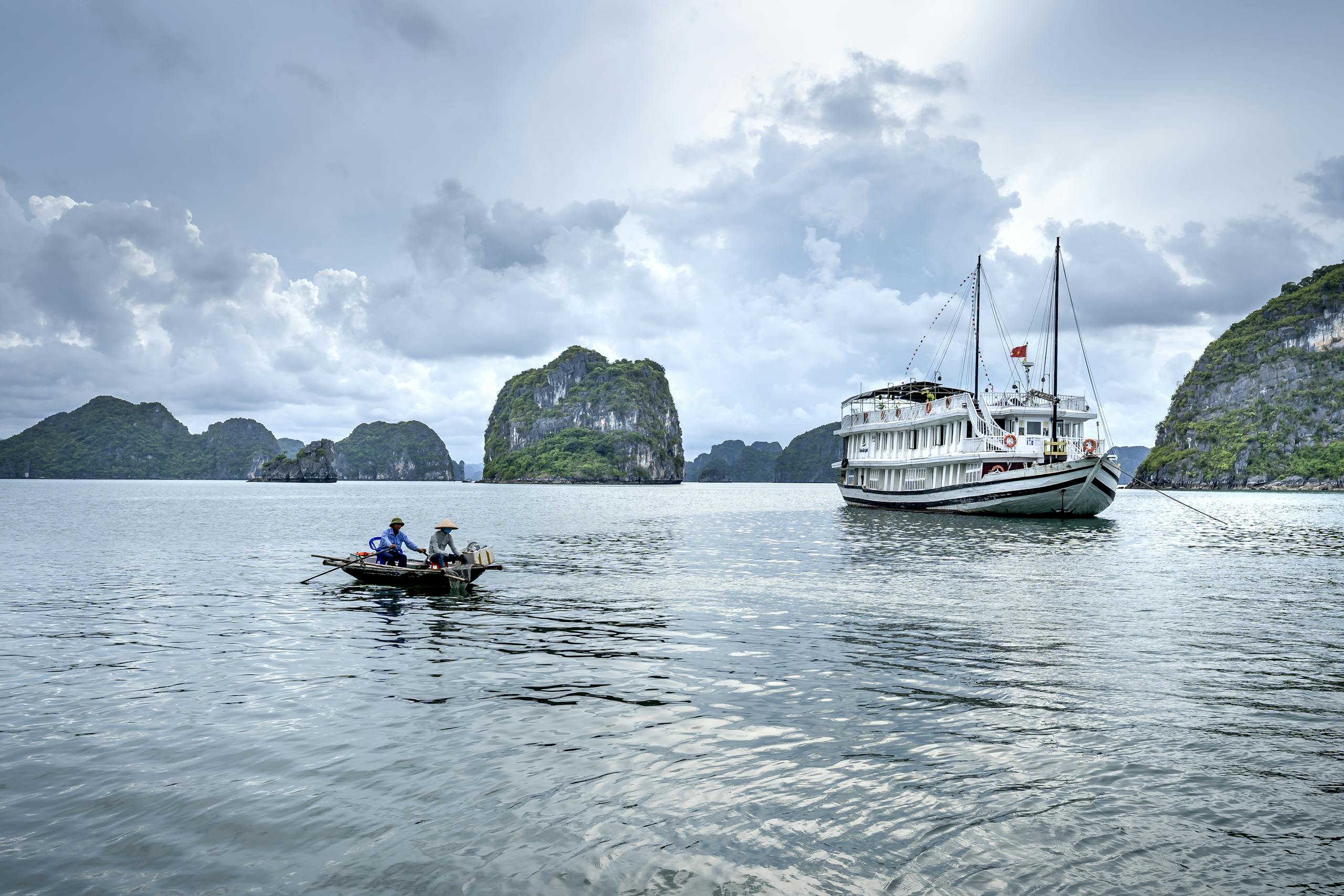
Options for Heritage and History Enthusiasts
If history is your jam, focus your 2-week trip on Vietnam’s rich heritage spots. Start in Hanoi with the Ho Chi Minh Mausoleum and the Old Quarter’s colonial charm. In Hue, explore the Imperial City and royal tombs. Wander Hoi An’s lantern-lit Ancient Town and hit up the nearby My Son Sanctuary for ancient ruins. Down south, Ho Chi Minh City offers poignant war museums and the Cu Chi tunnels. Timing your visit with local festivals or markets adds even more flavor.12
Nature and Adventure Focused Routes
For thrill-seekers, plan a route packed with outdoor excitement. Trek Sapa’s terraced hills or ride the scenic Ha Giang Loop by motorbike with jaw-dropping vistas. Kayak through the karsts of Ha Long Bay or Lan Ha Bay. Explore the epic caves of Phong Nha-Ke Bang National Park, home to Son Doong—the world’s largest cave. In the south, go sandboarding or kitesurfing in Mui Ne, or dive and snorkel in Nha Trang and Phu Quoc. You can scale your activity level depending on how fit or chilled you want to be.123
Relaxation and Beach Extensions
If chilling out is your goal, include some beach time. Hoi An blends culture with calm beaches like An Bang. Nha Trang has warming waters, island hopping, and spa resorts for serious R&R. Phu Quoc boasts pristine beaches, jungle vibes, and amazing seafood. Mui Ne offers a laid-back scene plus resorts. Great spots to unwind between busy travel days.34
Family-Friendly and Group Travel Alternatives
Traveling with kids or in groups? Pick safe, accessible, and fun spots. Hoi An has easy bike rides, kid-focused workshops, and gentle cultural tours. Overnight cruises on Ha Long Bay make for memorable but relaxing experiences suitable for all ages. Phu Quoc is family-friendly with calm waters and kid-approved resorts, while the Mekong Delta offers floating markets and orchards you can visit by boat. Keep the pace gentle and mix activities to keep everyone happy. You can tweak accommodations and guides to suit your group.134
- Start by figuring out your travel style: history buff, adventure junkie, beach lover, or family traveler.
- Pick regions and activities that fit what you want.
- Adjust your pace to balance exploring with downtime.
- Think about your group’s needs if you’re traveling with family or friends.
Personalizing your two-week Vietnam itinerary makes sure you have the perfect mix of discovery and relaxation, shaping a trip that’s all about you.
Bonus Resources to Enhance Your Trip Planning

Downloadable Itinerary PDF for Easy Reference
Having your itinerary handy on your phone or as a printed PDF is super handy. Apps like Wanderlog and TripIt let you export your entire trip details—including daily plans, bookings, and transport info—to PDFs you can access offline. That’s gold when you’re in remote spots like Sapa or the Mekong Delta without good internet.1 You can also find ready-made Vietnam itinerary PDFs from trusted folks like JTB USA or Next Continent Tours, giving you detailed day-by-day plans from north to south for easy printing or offline use.35
Interactive Planning Tools and App Recommendations
Travel apps make organizing your trip way easier and keep you sane on the road. Wanderlog is great—super user-friendly, lets you collaborate with travel buddies, tracks flights live, and works offline.1 TripIt automatically piles all your bookings into one neat itinerary and syncs with your calendar, plus keeps docs safe offline.5
Google Maps helps with custom navigation and saved places; Rome2Rio is great for transport planning; budgeting apps keep your spending in check. For Vietnam-specific trips, apps like Sygic Travel or Izitour add itinerary builders and offline maps—perfect for Hanoi, Hue and Ho Chi Minh without worrying about data.
Where to Find Trusted Local Guides and Tours
Booking local guides through reliable platforms makes your trip richer with real insights. Sites like Viator, Get Your Guide, and Airbnb Experiences offer vetted tours with honest reviews, from food crawls in Hanoi to boat trips in the Mekong.2 For tailor-made small-group tours, check out local companies like Izitour or Next Continent. Best to book early for 2025 since spots fill up fast.35
| Resource | Purpose | Key Features |
|---|---|---|
| Downloadable PDFs (JTB USA, Next Continent) | Offline itinerary reference | Detailed daily plans, printable, full North-to-South coverage |
| Apps (Wanderlog, TripIt, Google Maps) | Trip organization | Itinerary export, document storage, live updates, offline maps |
| Local Guides (Viator, Izitour) | Authentic tours | Vetted guides, reviews, cultural & adventure options |
Wrapping Up
Putting together the perfect Vietnam travel itinerary 2 weeks lets you dive into the country’s amazing mix—from Hanoi’s historic streets and Hue’s imperial wonders, to Sapa’s stunning landscapes and Ha Long Bay’s grandeur, ending with Ho Chi Minh City’s vibrant buzz and the peaceful Mekong Delta. This guide has given you the lowdown on balancing culture, nature, and adventure, plus practical tips on transportation, budgeting, and authentic local experiences to juice up your trip.
When you’re ready to lock things in, remember to make the plan your own—adjust for what you love and your ideal pace, pack smart, and book early. Embrace Vietnam’s rich heritage and breathtaking scenery to the fullest—your unforgettable two-week adventure is just around the corner. Ready to get started? Grab a detailed itinerary PDF or connect with trusted local guides and start making your travel dreams real!
- Key Takeaways
- Overview of Your 2-Week Vietnam Journey
- Day-by-Day Detailed Vietnam Itinerary
- Top Destinations and Emerging Highlights to Include
- Transport and Travel Logistics Throughout Vietnam
- Recommended Activities and Authentic Local Experiences
- Practical Tips for a Smooth Vietnam Trip in 2025
- Budget Planning and Cost-Saving Strategies
- Customizing Your Vietnam Itinerary Based on Travel Style
- Bonus Resources to Enhance Your Trip Planning
- Wrapping Up
Get your FREE Monstera Art download
Join our WanderLife Studios mailing list to get updates about our work and be the first to know about upcoming art products.
As a Thank You Gift, you will get this wonderful hand-drawn Monstera Line Art as a digital download for FREE .
